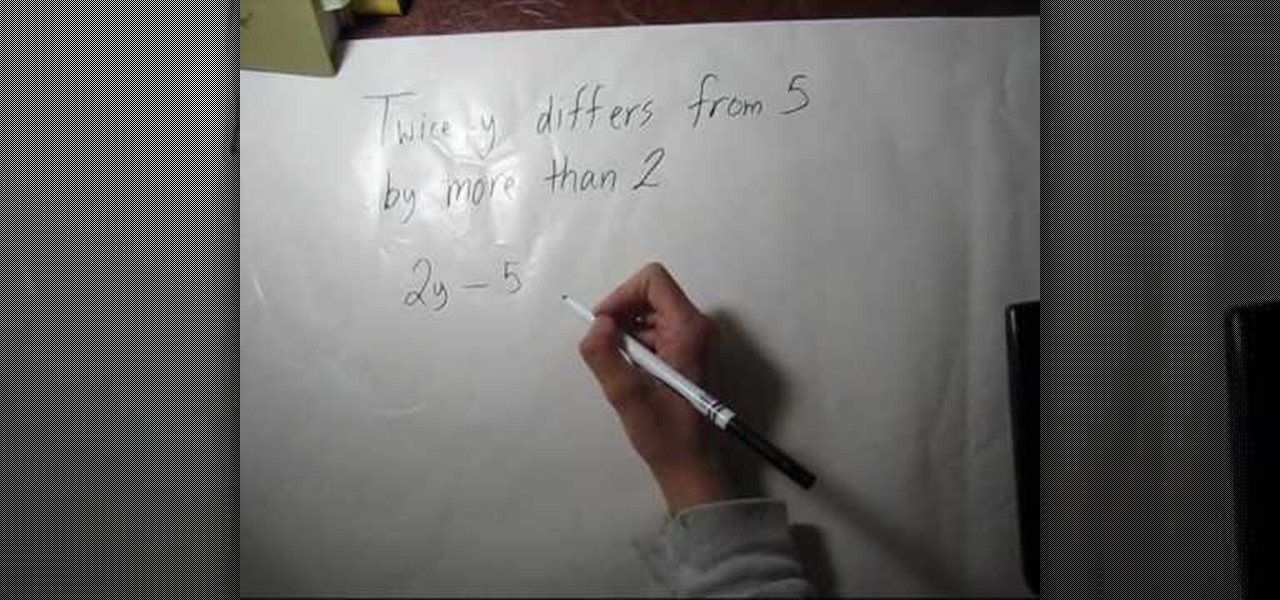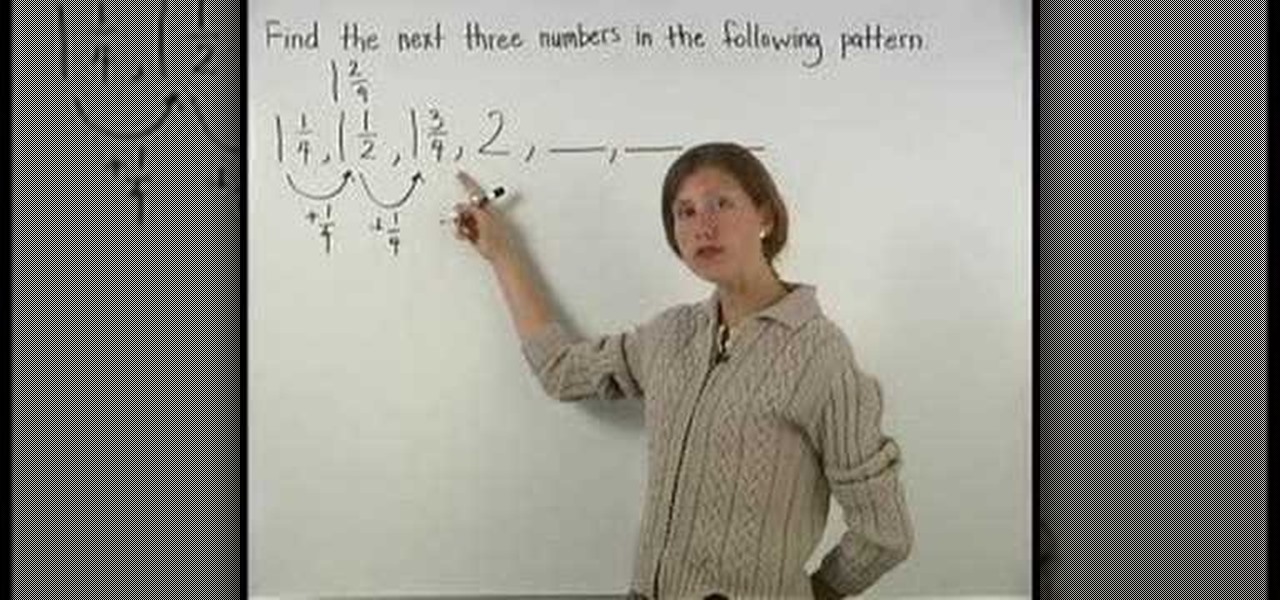Everything Else


How To: Master inverse proportions in algebra
This is a video tutorial in the Education category where you are going to learn how to master inverse proportions in Algebra. Inverse proportions have a different rule; more means less or less means more. Let us understand this with an example. It took 175 minutes to drive to the cottage at 80 kmph. If we drive at 100 kmph instead, how long will it take? Here the speed of travel is more but the time taken to complete the journey will be less. So, this is a more means less kind of inverse prop...
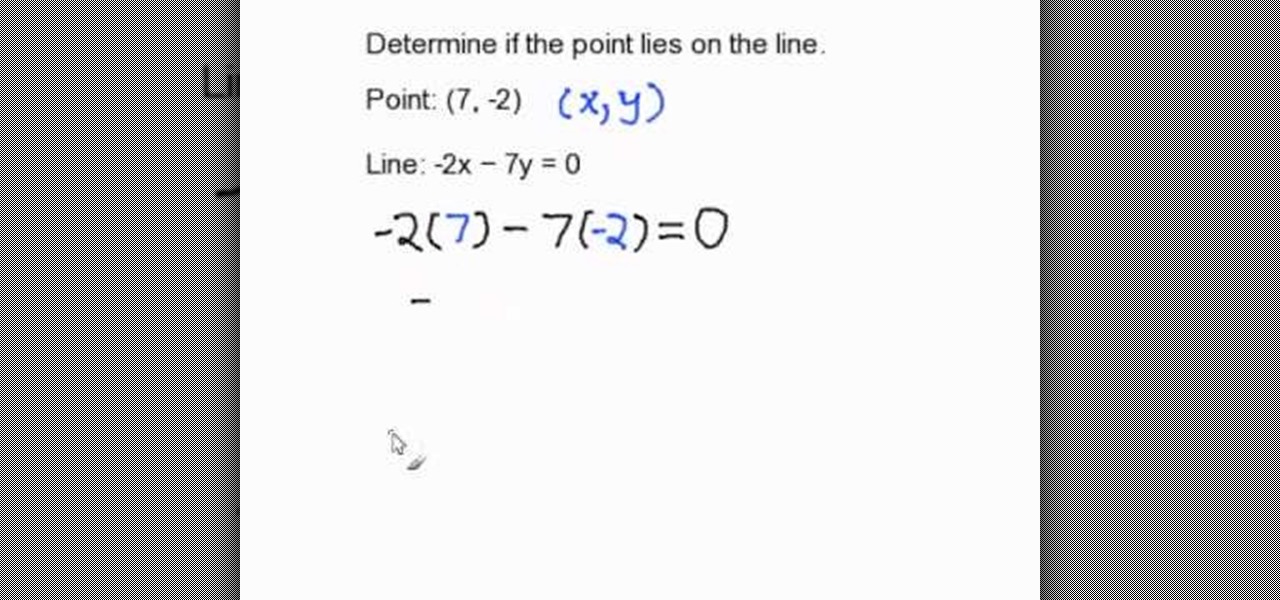
How To: Determine if a point lies on a line in standard form
In this video, we learn how to determine if a point lies on a line in standard form. In order to do this, you will need to substitute the X and Y value with the ordered pair that is given. The X value is the first number and the Y value is the second number. Re-write your equation, substituting in the numbers to the appropriate spots. Now, simplify the equation by doing multiplication with the negatives and positives (if given). When you get through the equation, you will end up with the solu...

How To: Borrow and regroup in math
In this video, we learn how to borrow and regroup in math. First, look at the top numbers of the subtraction equation. Look to see if it's smaller than the bottom number. If not, look at the numbers to the left of each one on the top to see if you can borrow from them. If you can, then you will have to lower than number by one each time you are borrowing a number. Once you do this, you will be able to subtract the number at the top from the number at the bottom, even when the individual numbe...
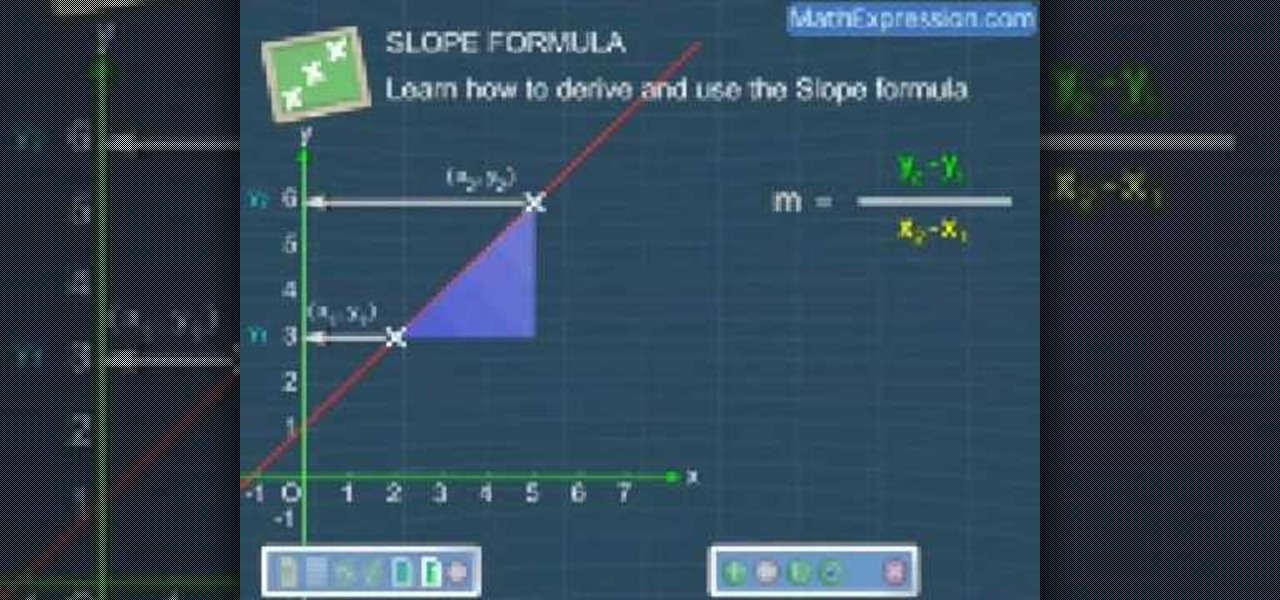
How To: Derive and use the slope formula
In this video, we learn how to derive and use the slop formula. The slope of a line is equal to change in y divided by the change in x. First, put the first point on the coordinate point. Then, represent the X and Y by X1 and Y1. Then, put the second point on the plane, representing the coordinates with X2 and Y2. Now, with these two points, draw a straight line and derive the formula from here. The change in X will be from X1 to X2. Now, replace that with the change in X and do the same for ...
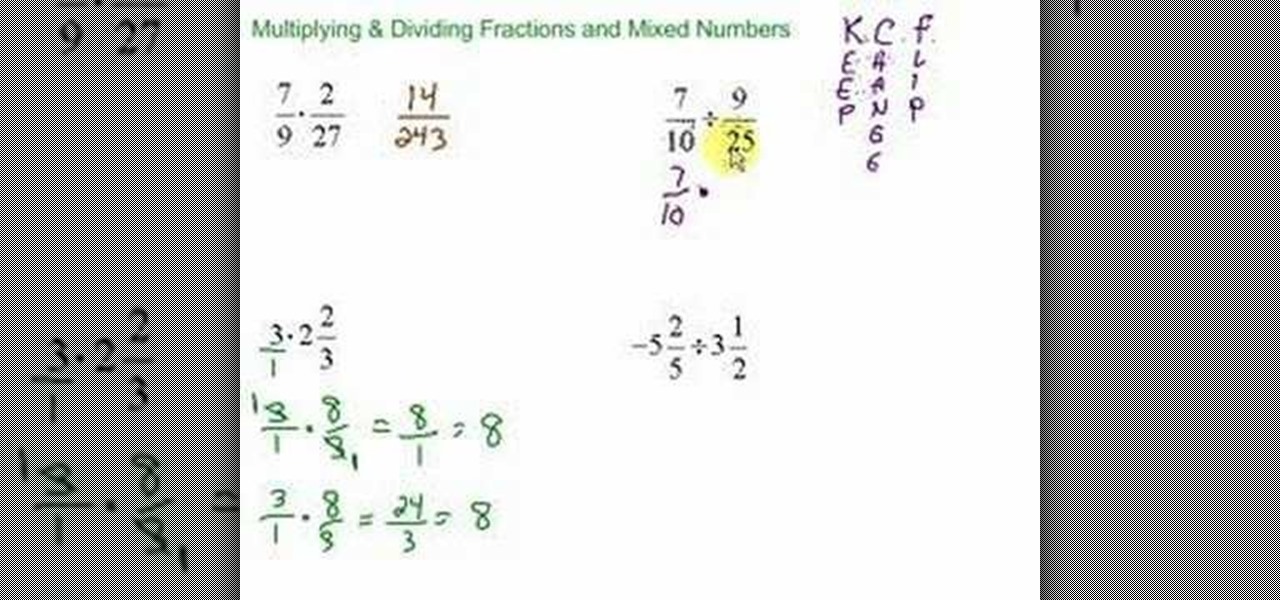
How To: Multiply & divide fractions & mixed numbers
In this tutorial, we learn how to multiply & divide fractions & mixed numbers. When multiplying and dividing fractions you don't need a common number, you just multiply straight across. When dividing, you simply flip the second fraction over and multiply straight across like normal. When multiplying a whole number and mixed number, simply put the whole number over one. Then, convert the mixed number into an improper fraction. Then, multiply the mixed number with the numerator and add in the d...
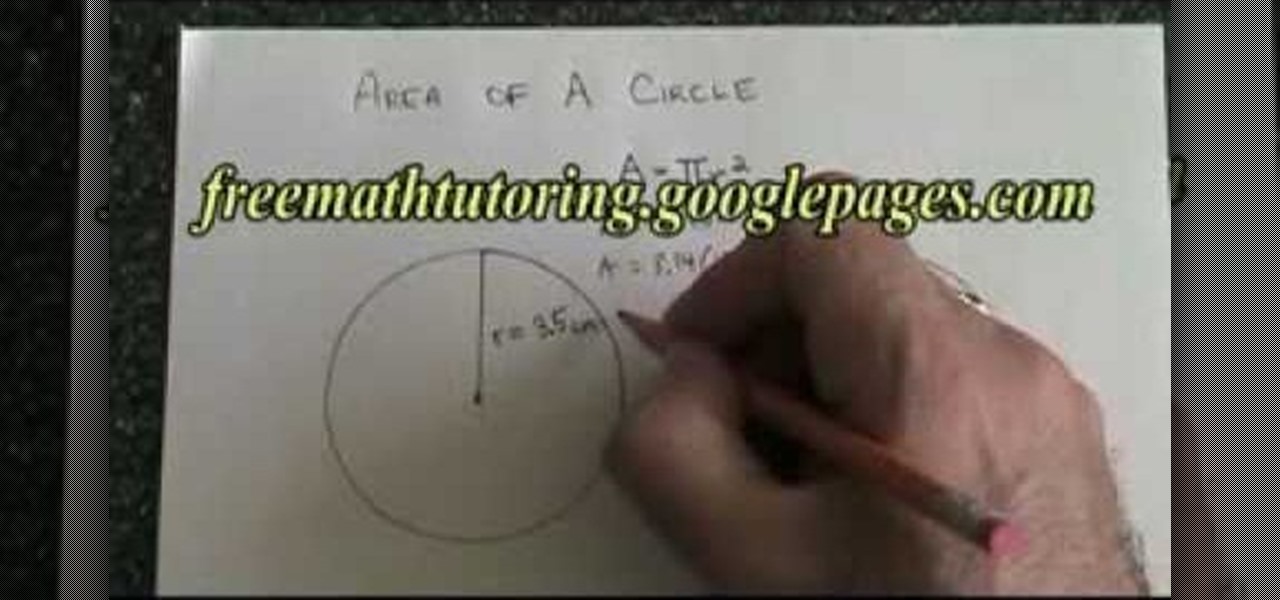
How To: Find the area of a circle
In this tutorial, we learn how to find the area of a circle. First, you will need to know the formula for finding the area of a circle, which is Area=Pi(r)squared. Now, find the radius of the circle in question. After this, fill in the radius to the equation and start to do the math. The area will equal what the radius is, times pie and squared. After you do the math for this, you will have found the area of the entire circle. Make sure you label the number with units, or else your answer wil...

How To: Solve rational inequalities
In this video, we learn how to solve rational inequalities. First, you will take the problem (x-1 over x+2 is greater than 0). The first method to solve this is to think you have any number divided by another number is greater than 0. Remember the properties to solving problems. Know that both A and B have to be greater than 0 since it's a positive divided by a positive. Or, you can have a negative divided by a negative which will make a positive. The first solution is (x-1 greater than 0 and...

How To: Multiply fractions
In this tutorial, we learn how to multiply fractions. First, you must know that the number on the top is called a numerator and the number on the bottom is the denominator. First, write out your equation with the fractions listed horizontally next to each other. After this, multiply the numbers straight across. The numerator will multiply with the numerator and same for the denominator. After this, when you get the final fraction you will need to reduce this further if you can. If you end up ...

How To: Solve a single-step equation using multiplication
In this video, we learn how to solve a single-step equation using multiplication. For the first step, get rid of any number surrounding the variable. To do this, you will need to multiply the numbers around it by their opposite to make them equal zero. Once you have done this, you will need to repeat the process on the other side of the equal sign. Just do the same exact thing you did in the first step, then you will be able to easily solve the problem at hand. You can check your answer by re...

How To: Grasp the differences of census, study, & sample survey
In this tutorial, we learn how to know the difference: census, study, & sample survey. The census is when everyone's opinion is needed. An example is when you will see census studies happen throughout the year from the government seeing how many people live in one household. A study is when you only need the opinion of experts. This can be when companies are releasing a new product and need the opinions of doctors or dentists about it. A sample survey is when a few people's opinions are enoug...
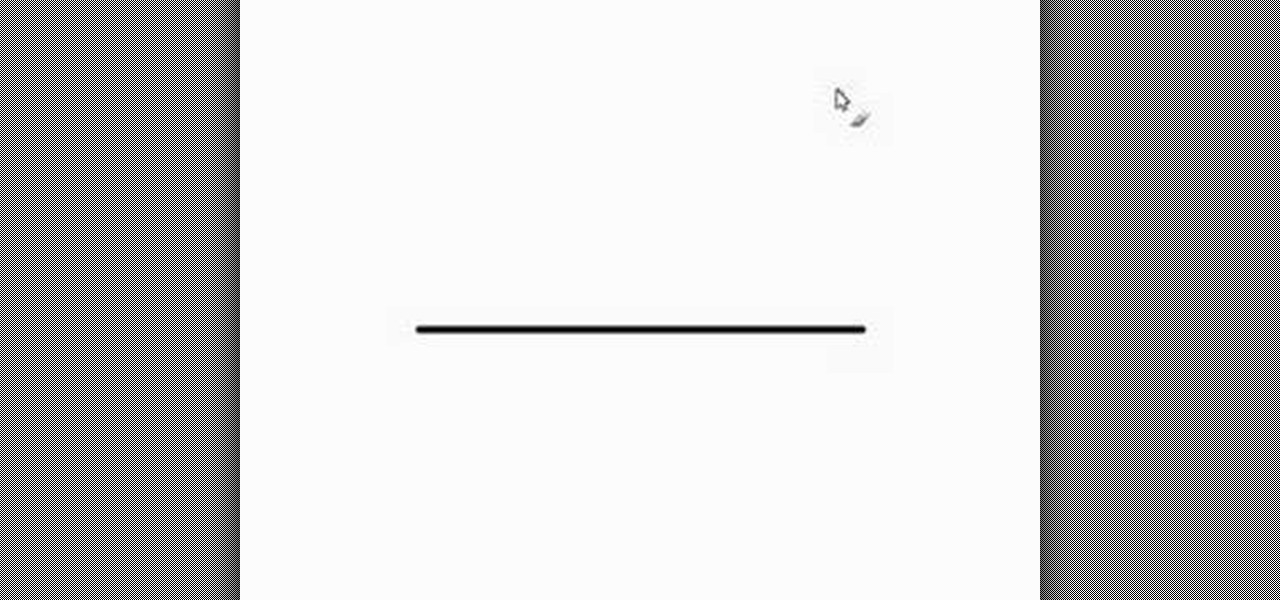
How To: Bisect a line segment
In this tutorial, we learn how to bisect a line segment. First, you need to adjust your compass so the distance from the sharp part and the drawing part is the size of the line. Then, put the sharp part on one side and draw your arc with the pencil. Do this on both sides of the line so your image shows two arcs that intersect each other. Since you have these two intersecting lines, you can draw a line between these to show where the middle of the line would be. Use a ruler to draw this straig...
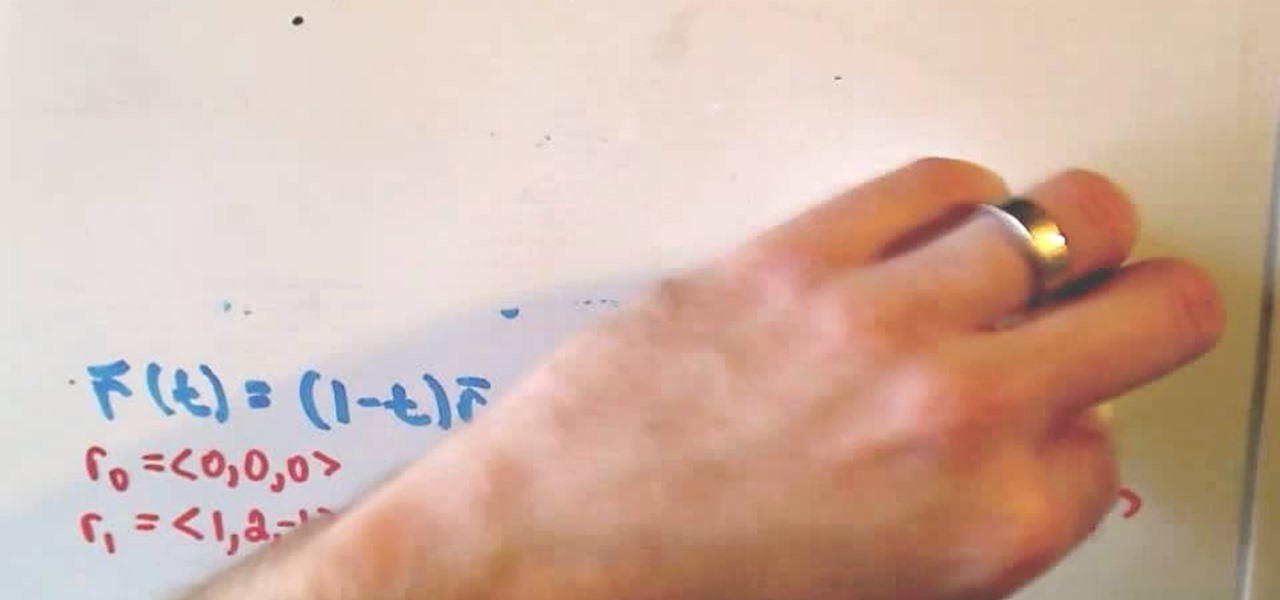
How To: Evaluate a line integral along a straight line segment
This video tutorial is in the Education category which will show you how to evaluate a line integral along a straight line segment using the definition of the line integral. This video evaluates a line integral along a straight line segment using a parametric representation of the curve (using a vector representation of the line segment) and then integrating. A vector representation of a line that starts at r0 and ends at r1 is r(t) = (1-t)r0 + tr1 where t is greater than equal to 0 and lesse...

How To: Find the volume of a pyramid
In this tutorial, we learn how to find the volume of a pyramid. The equation to figure out how to find the volume of a pyramid is 1/3ab x h. When you begin, find the height, length, and square feet of the pyramid, then fill these into the appropriate spots in the equation. Once you find this, you will be able to find the correct number of the volume of the pyramid. After this, make sure you have the correct labels on the answer that you get from the equation you filled out. When finished, you...

How To: Identify the constraints & function to be optimized
In this tutorial, we learn how to identify the constraints & function to be optimized. When you are asked for the elements of constraints, you are being asked for the plain English version. If you are told you only have so much of something inside of a written problem, then take into account all of the limits that are listed. Once you have these, write them down so you have them in one place. After this, write down the number for the unrestricted part of the problem. After this, you will be a...
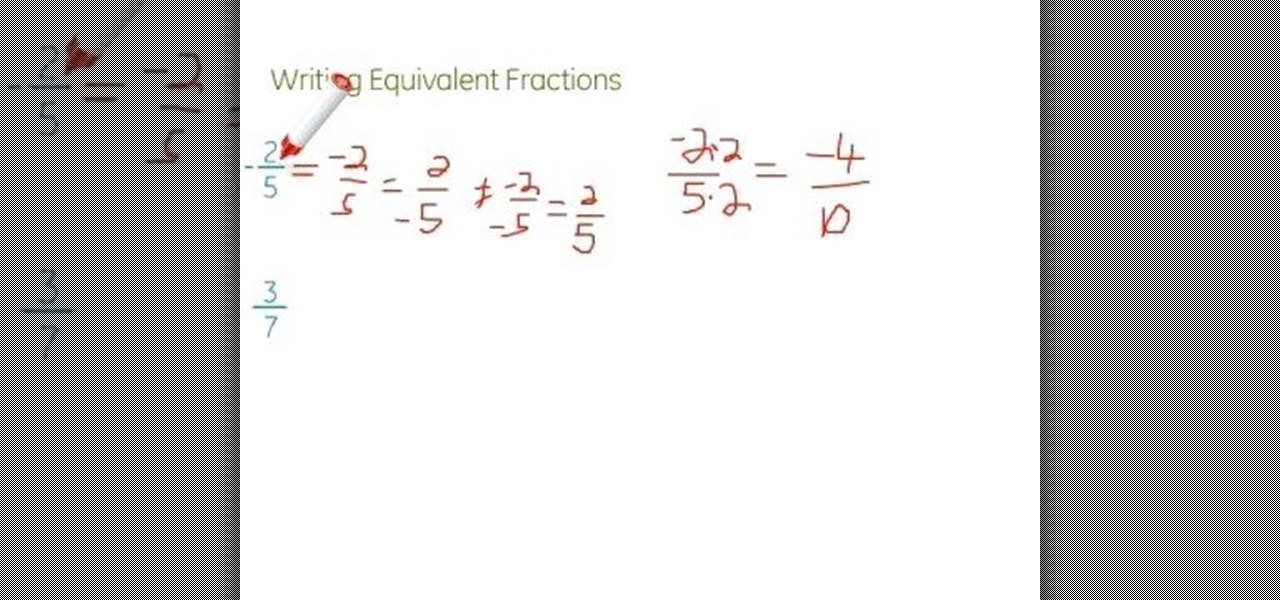
How To: Write equivalent fractions
In this tutorial, we learn how to write equivalent fractions. If you have a negative in front of the fraction, it's the same as writing the negative on the numerator or the denominator. If we would have a negative on the top and on the bottom, this would cancel both out to create a positive, which wouldn't be right. To write the fractions, simplify it. If it's already simplified, you will need to multiply the fraction. After you do this, you will finish the equation and have it written out in...

How To: Find the standard deviation with the Z-Score formula
In this tutorial, we learn how to find the standard deviation with the Z-Score formula. First, take your problem and write it out one by one underneath each other. Then, you will need to substitute the numbers in for the variables that are in the problem. Once you do this, you will follow the basic rules of math to find out what the answer to the problem is appropriately. Once you have done this, finish off the problem to find the answer, then you will have found the standard deviation using ...
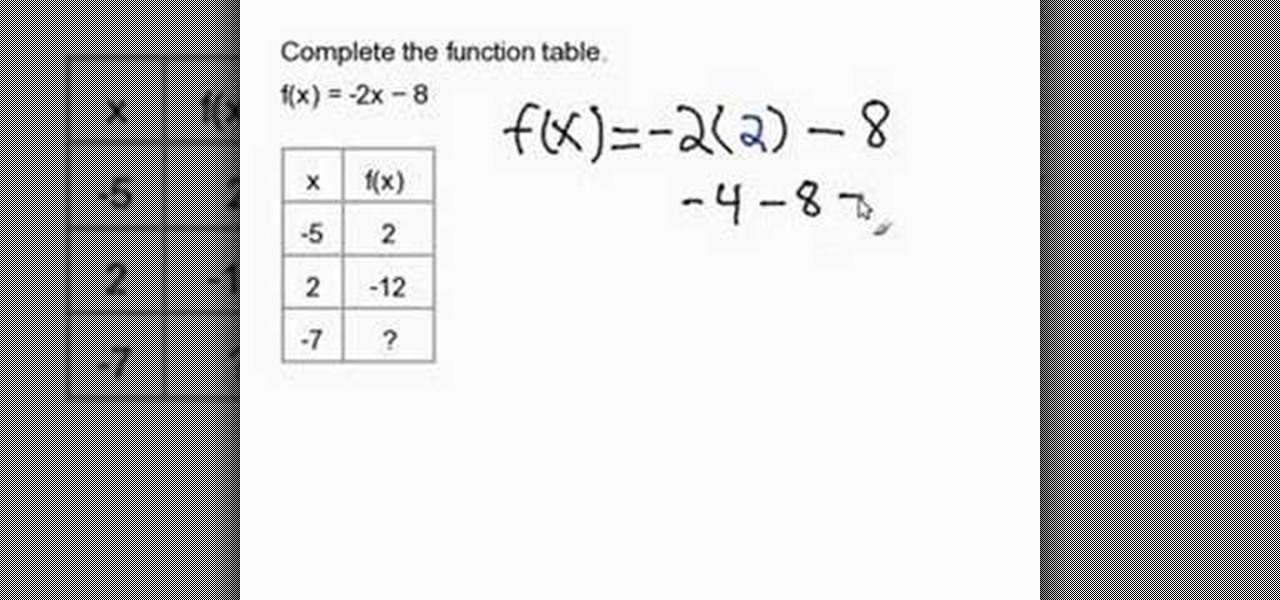
How To: Evaluate functions
In this tutorial, we learn how to evaluate functions. A function is an equation with an input and an output. For the value of "X" there is going to be a value for the rest of the values that are in the equation. To start, write out the equation, then substitute the "x" with the appropriate number. After this, substitute the "x" in the rest of the equation where it belongs. Once finished, work out the rest of the equation in the appropriate order. Now you will be able to finish it and get the ...
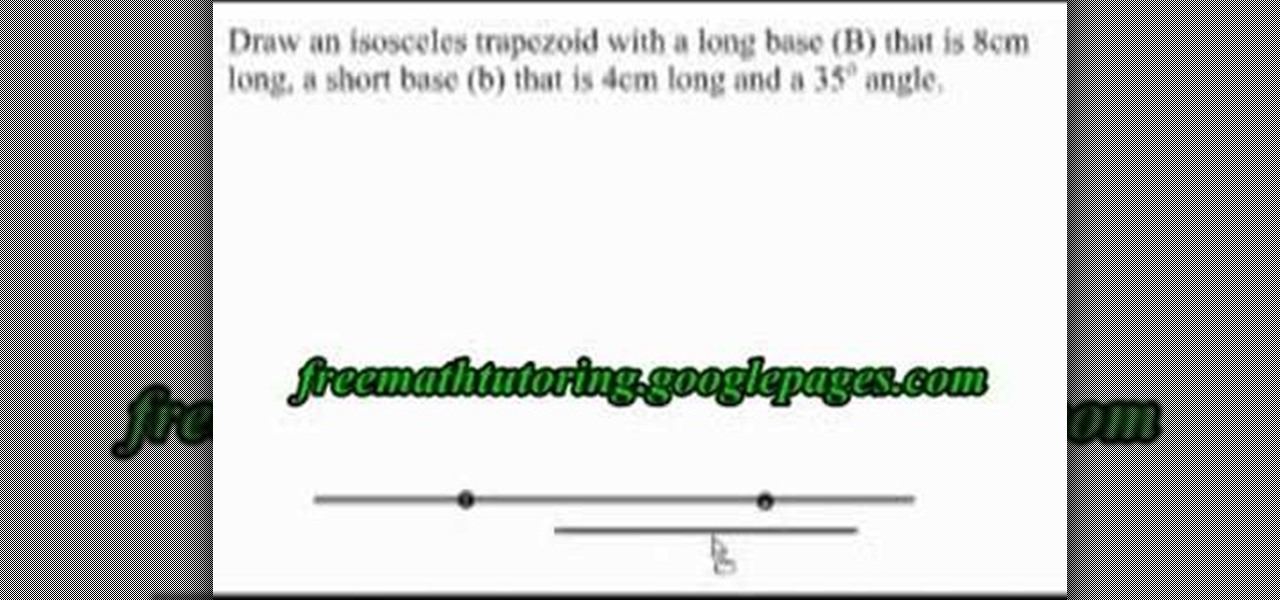
How To: Draw an isosceles trapezoid
This is a video tutorial in the Education category where you are going to learn how to draw an isosceles trapezoid. This video demonstrates how to draw an isosceles trapezoid with a long base (B), a short base (b) and a 35 degree angle. First you draw the long base. Now center the short base at the center point of the long base and mark the end points of the short base with dots. Next draw perpendicular dotted lines from the dots extending upwards. Draw 35 degree angles from either end of the...

How To: Use the PRIME operator in math
In this video, we learn how to use the PRIME operator in math. The prime operator is the opposite of something in the equation. Take a look at the illustration in the video that is shown. Once you see that, you will be able to tell what A prime and B prime are. A prime is the opposite of "A". If a number is shaded in "A" it should not be shaded in "A Prime". The same goes for the prime of the letter "B". Just pay attention to what the numbers selected for each letter is, then use the opposite...

How To: Find the interior & exterior angles of a triangle
In this tutorial, we learn how to find the interior and exterior angles of a triangle. I triangle has three angles and their measurement when added together will equal 180. For example, if one angle is 80 and another is 30, then start off saying the equation equals 180. Write in 80+30+X in front of the equals sign, then subtract the combined like terms from the 180. After this, you will have found the value of x, which will also be the measurement of the last angle. Make sure to write out the...
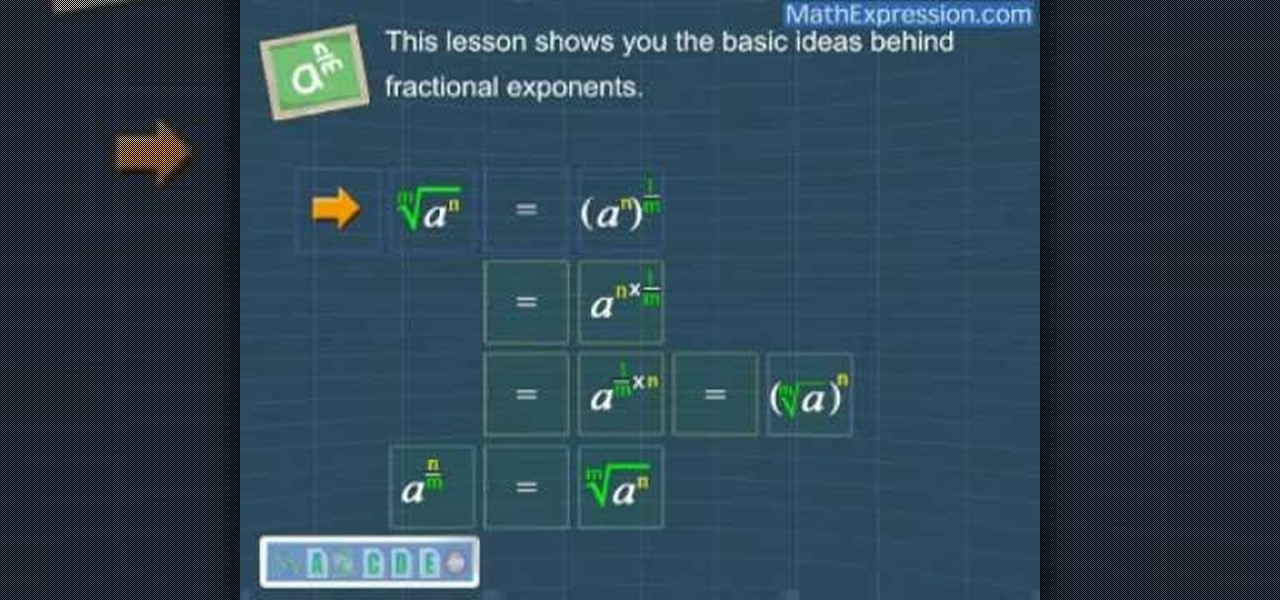
How To: Understand fractional exponents
In this tutorial, we learn how to understand fractional exponents. Starting with an example, let's say you have the square root of four as an equation. The answer to this is two. A fractional exponent is not much different than this problem. Let's say you have 4 to the 1/2 power. This would be equal to (2 squared) 1/2. Now, using the third exponent law, the term becomes 2 to the power of two x 1/2. This will leave you with the answer of two. Now you know how to get the correct answer and can ...

How To: Draw a parallelogram given base, angle & altitude
In this tutorial, we learn how to draw a parallelogram given base, angle & altitude. First, you will draw the base of the parallelogram, using your ruler to measure out the line. Next, you will draw a dotted line perpendicular to the line that you just drew that is 3 cm in length. Then, you will draw another dotted line on top of the one you just drew. This dotted line shows where the top of your parallelogram will be. Then take your protractor and draw it at the angle the problem gives you. ...

How To: Do fraction multiplication
This is a video tutorial in the Education category where you are going to learn how to do fraction multiplication. Before multiplying two fractions together by multiplying across the numerators and the denominators, you should always try to cross cancel as your 1st step. For example in the problem, (-15/4) x (14/5), 15 and 5 will cross cancel to 3 and 1. Similarly, 14 and 4 will cross cancel to 7 and 2. So, what you will get now is (- 3/2) x 7. Also you should take care of the signs. In this ...
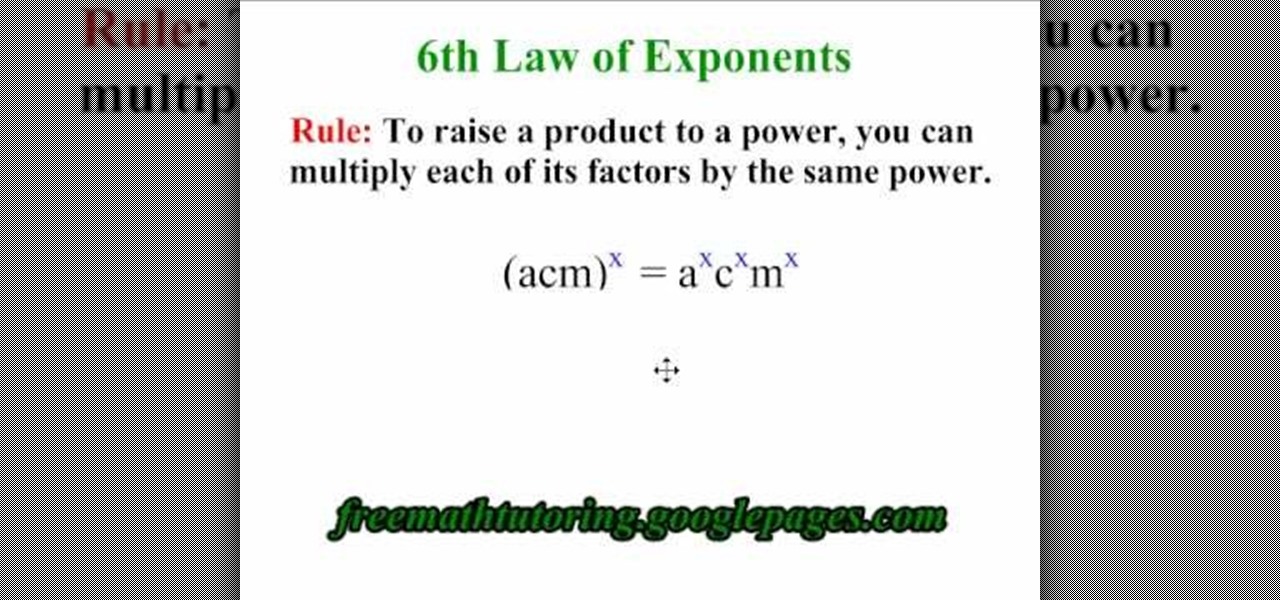
How To: Apply the 6th Law of Exponents
This is a video tutorial in the Education category where you are going to learn how to apply the 6th Law of Exponents. The 6th law of exponents says, to raise a product to a power, you can multiply each of its factors by the same power. For example if you have (acm) to the power x, that will be equal to the product of (a to the power x), (c to the power x) and (m to the power x). How is this done? (acm) to the power x is same as (a to the 1, c to the 1 and m to the 1). What we are doing is, w...
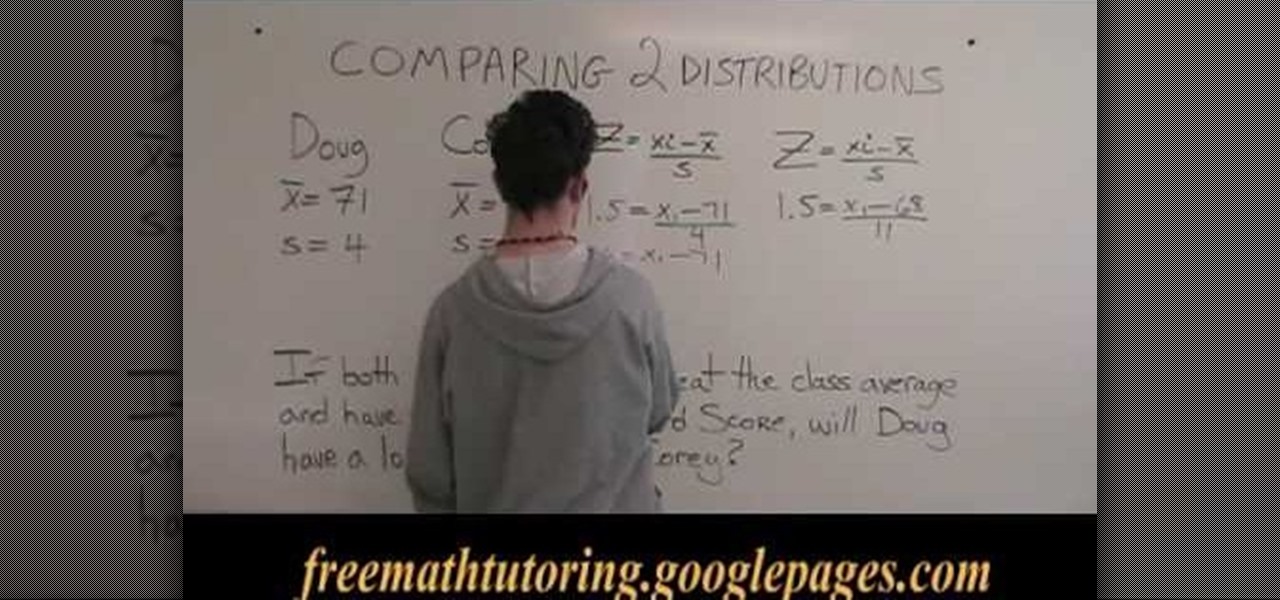
How To: Compare 2 distributions with the Z-Score formula
This is a video tutorial in the Education category where you are going to learn how to compare 2 distributions with the Z-Score formula. In this example Doug's class has X bar as 71 and a standard deviation of 4. Corey's class has X bar as 68 and a standard deviation of 11. If both Doug and Corey beat the class average and have the same standard score, will Doug have a lower grade than Corey? If both of them have a standard score of 1.5, then Doug will get 77 marks and Corey will get 84.5 mar...
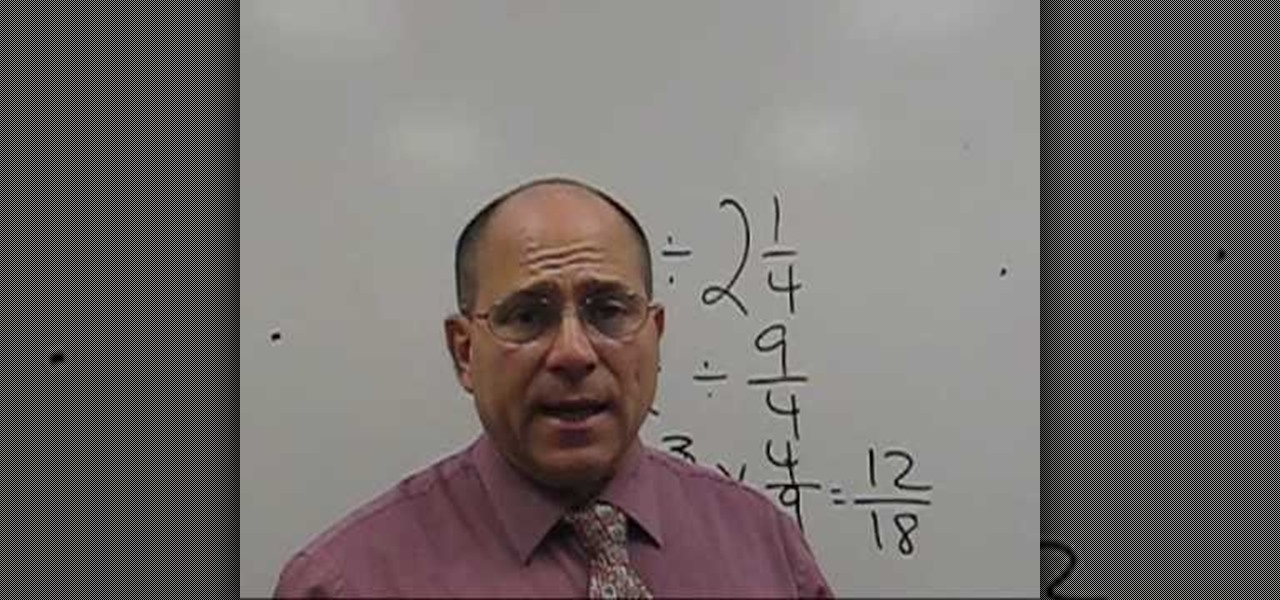
How To: "Flip and go" to divide fractions
In this video, we learn how to flip and go to divide fractions. First, take your equation and then look at the fractions that you are given. If you work this out and end up with a fraction that can be reduced further, then reduce it. If you understand how to multiply fractions then you will understand how to divide them. You will take the second fraction in your equation and flip it upside down. Now the denominator will be the numerator and so on. Once you do this, you will change the sign to...

How To: Use the distance formula for two points
In this tutorial, we learn how to use the distance formula for two points. The distance formula is D= the square root of (X2-X1) squared, plus (Y2 minus Y1) squared. It may look confusing, but it's just a derivation of a theorem. First, find the two points that you have and graph them. If you want to know the distance between them, you cannot just count squares if it's a diagonal line. If you remember geometry, you can draw a right triangle over the line to figure out the distance. After this...
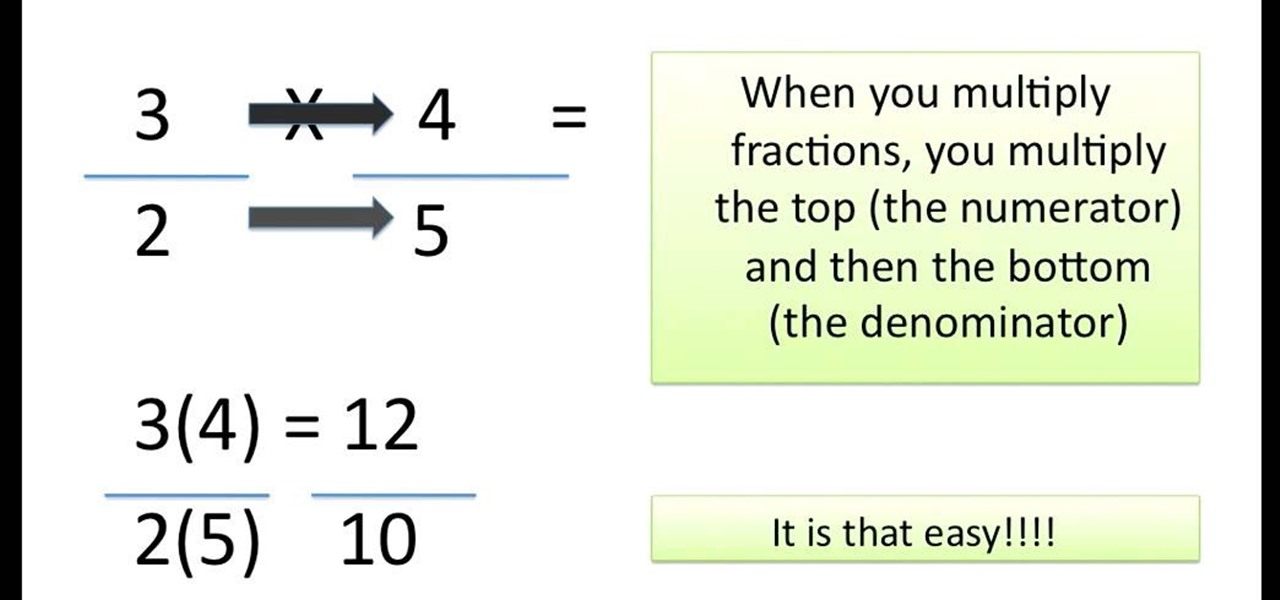
How To: Multiply fractions easily
In this tutorial, we learn how to multiply fractions easily. First, you will need to know where the numerator and denominator are in the equation. Numerator is on top and Denominator is on the bottom. When you multiply fractions, you multiply the top and then the bottom of the fractions straight across. Once you have multiplied them, you will write your number out as a fraction. Make sure you reduce your fraction as much as you can, or else it will not be a correct answer. To reduce it, see w...

Find the discriminant (DELTA): quadratic equation
The discriminate of any equation in any degree plays an important role in determining the roots of that equation.
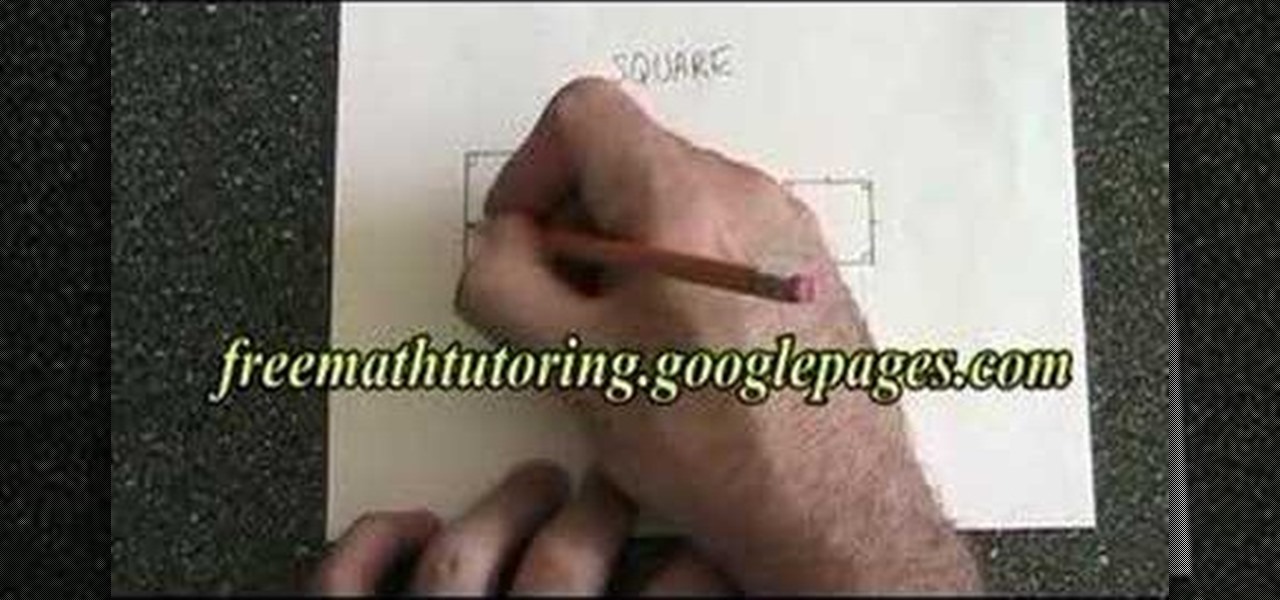
How To: Understand the properties of a square in Geometry
In this tutorial, we learn how to understand the properties of a square in Geometry. The four angles on the inside of a square have to be right angles. All but be 90 degrees and add up to 360. A square has four equal sides, which you can notate with lines on the sides. The diagonals of the square cross each other at right angles, so all four angles are also 360 degrees. Diagonals have to be equal in length to each other as well. Once you better understand this, you will be able to learn more ...

How To: Find the percent of a number
In this tutorial, we learn how to find the percent of a number. First, take the percent and convert it into a decimal. Then, multiply this by your other number. After this, you will come up with the answer to the problem. An example of this would be if you had the question: what number is 25% of 40. First, you would find the decimal of 25, which is .25. After this, you would multiply that by 40 and then come up with the correct answer, which is 10. Repeat this process for the different equati...

How To: Find abc, curve direction & y-intercept (quadratic eq)
In this tutorial, we learn how to find abc, curve direction & y-intercept (quadratic eq). First, you need to find the a,b, and c of the equation. A will equal what the coefficient is in the equation, B will equal the second, and C will equal the third term. This tells us if the numbers are positive or negative, so so know if the parabola opens up or down. To graph C, you will know what the y-intercept is going to be, then find the matching units. After this, you will use B to shape the parabo...
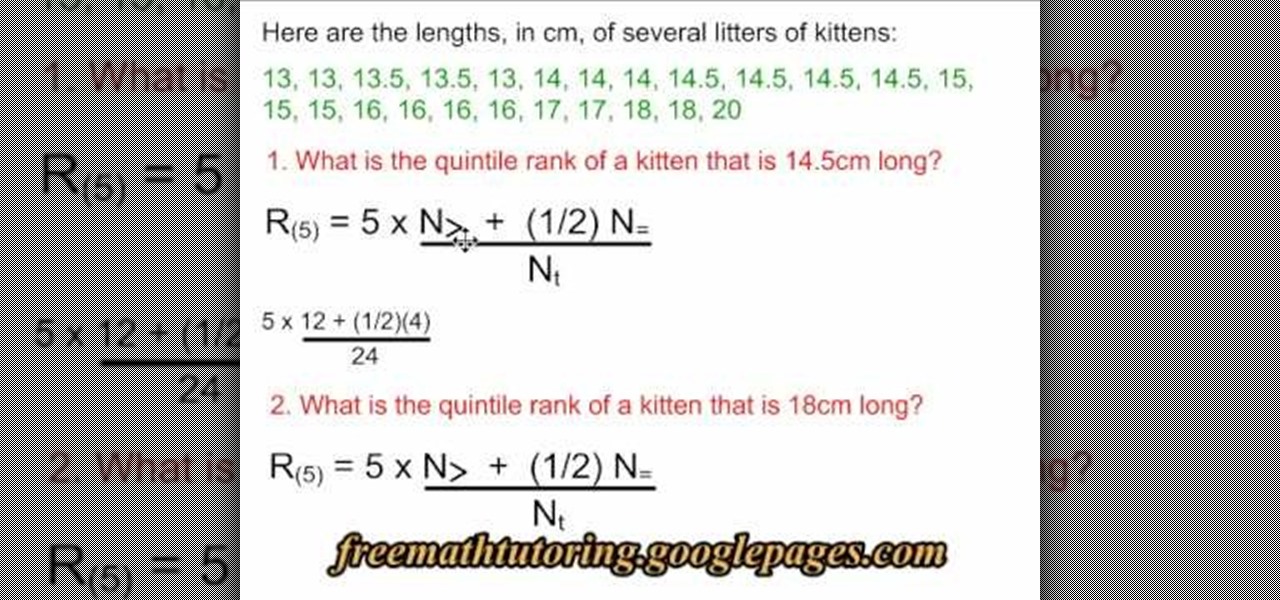
How To: Use the Quintile Formula in Statistics
In this tutorial, we learn how to use the Quintile Formula in Statistics. To find the quintile rank of a formula that is in a certain set, you will first need to count the number you are given. Then, read the equation so you understand what the R, N, equal side, and other numbers mean. Once you understand what all of these mean, fill in the formula with the correct information. Use the information you are given in the question to fill it into the equation. When finished, you will apply the ru...

How To: Simplify algebraic fractions
In this tutorial, we learn how to simplify algebraic fractions. First you will need to simplify the fractions. You need to factor the numerator out, figure out what A is and what B is. Then, figure out what C is and what the products equal as well. When you have these, you will be able to fill these factorizations into the equation. Rewrite the equation with your figured out numbers inside, then you will be able to solve the equation. Use the rules of PEMDAS to figure out how to solve it, the...
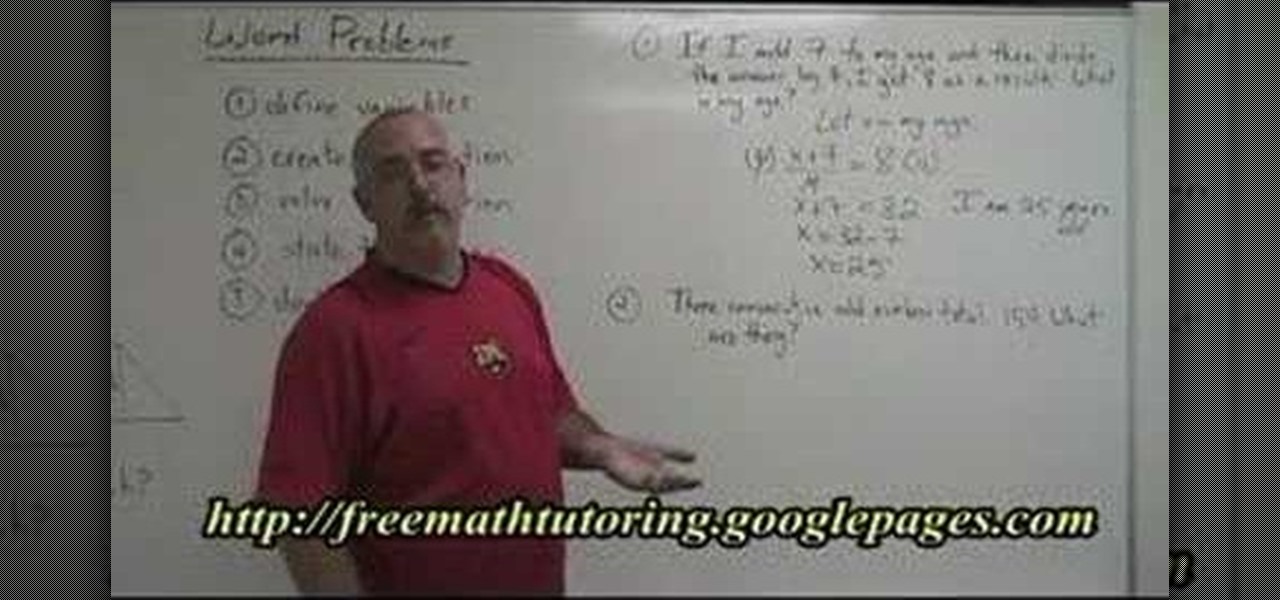
How To: Solve word problems in Algebra
Having trouble with word problems in algebra? Watch this video to clear a few concepts as well as to learn how to systematically tackle word problems in exams.
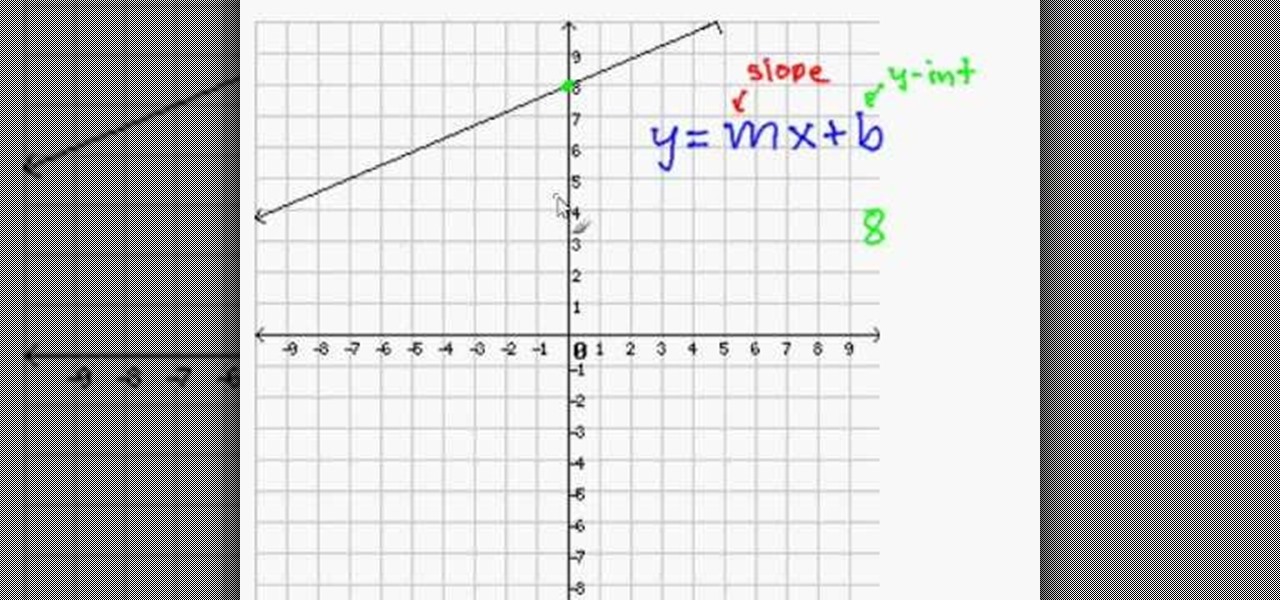
How To: Write a slope intercept equation for a line on a graph
A topic which is taught during school days: The slope - intercept equation of a line in a 2 dimensional space.
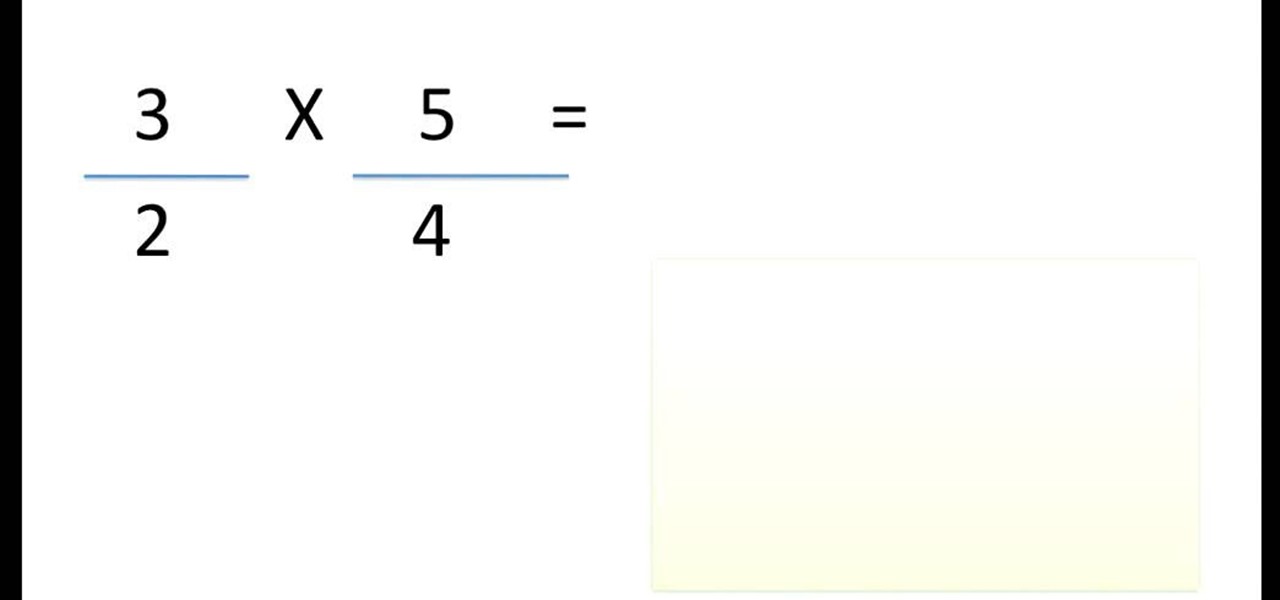
How To: Divide fractions step by step
In this tutorial, we learn how to divide fractions step by step. First, you will need to know the different parts of the fraction, the numerator and the denominator. After you know these, you will flip the second fraction in the equation so the numerator is at the bottom and the denominator is at the top. Once you do this, change the division sign to a multiplication sign. Now, you will multiply the fraction as you normally do and then have the answer! This is a very simple way to divide frac...

How To: Find the area of a triangle given three points
In this tutorial, we learn how to find the area of a triangle given three points. First, you will need to plot the points on a graph. After this, find the base and the height using the graph. Next substitute into area of a triangle formula and then evaluate. When you finally find the area of the triangle, then you will write down the answer ending it with the units. This is a simple way to find the area of the triangle, you just have to make sure you count correctly and have calculated the ar...

How To: Change fractions to decimals
In this tutorial, we learn how to change fractions to decimals. First, you will need to divide the numerator by the denominator. The numerator is the top number and the denominator is the bottom number. Once you get this number, you will end up with a decimal instead of a fractions. When finished, you will end with the number that will be your answer! Practice doing this with simple numbers, then move onto more difficult to test your mind and get better and better at math! This is an easy con...
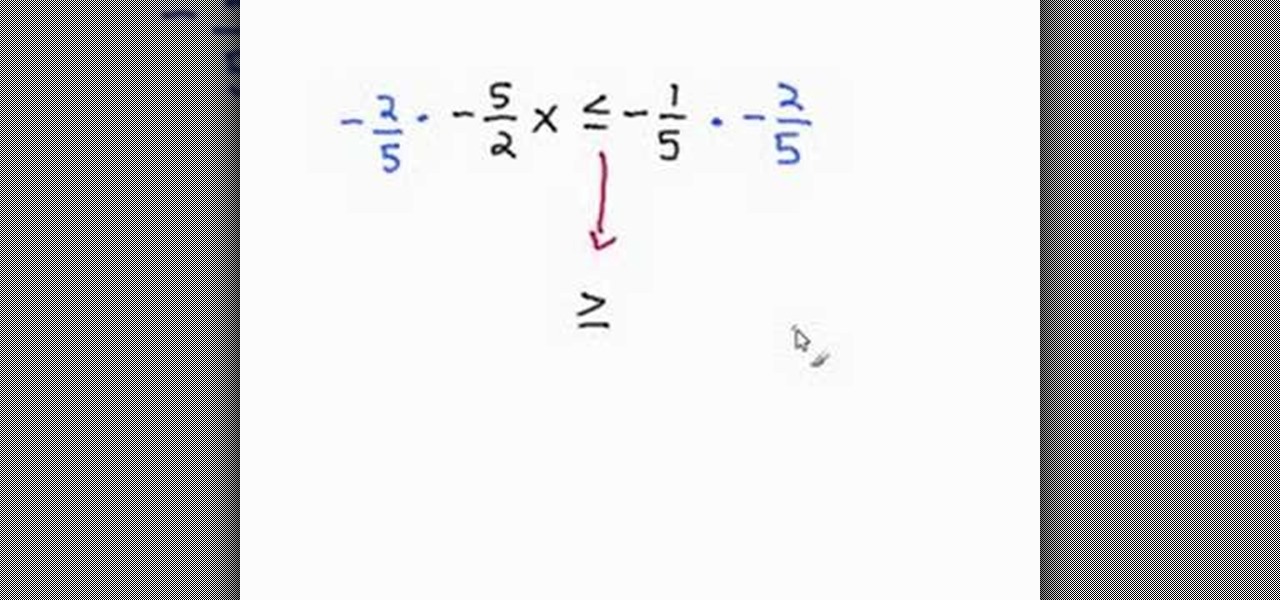
How To: Solve single-step inequalities using the reciprocal
This video tutorial is in the Education category which will show you how to solve single-step inequalities using the reciprocal. Let's solve the problem "negative 5/2 X is less than equal to negative 1/5". To solve for "X", we need to get rid of "negative 5/2". To do that, we multiply both sides of the inequality by the reciprocal of 5/2 and we need to keep the negative sign also. So, we multiply both sides by "negative 2/5". Whenever we multiply a negative to both sides of an inequality, the...




